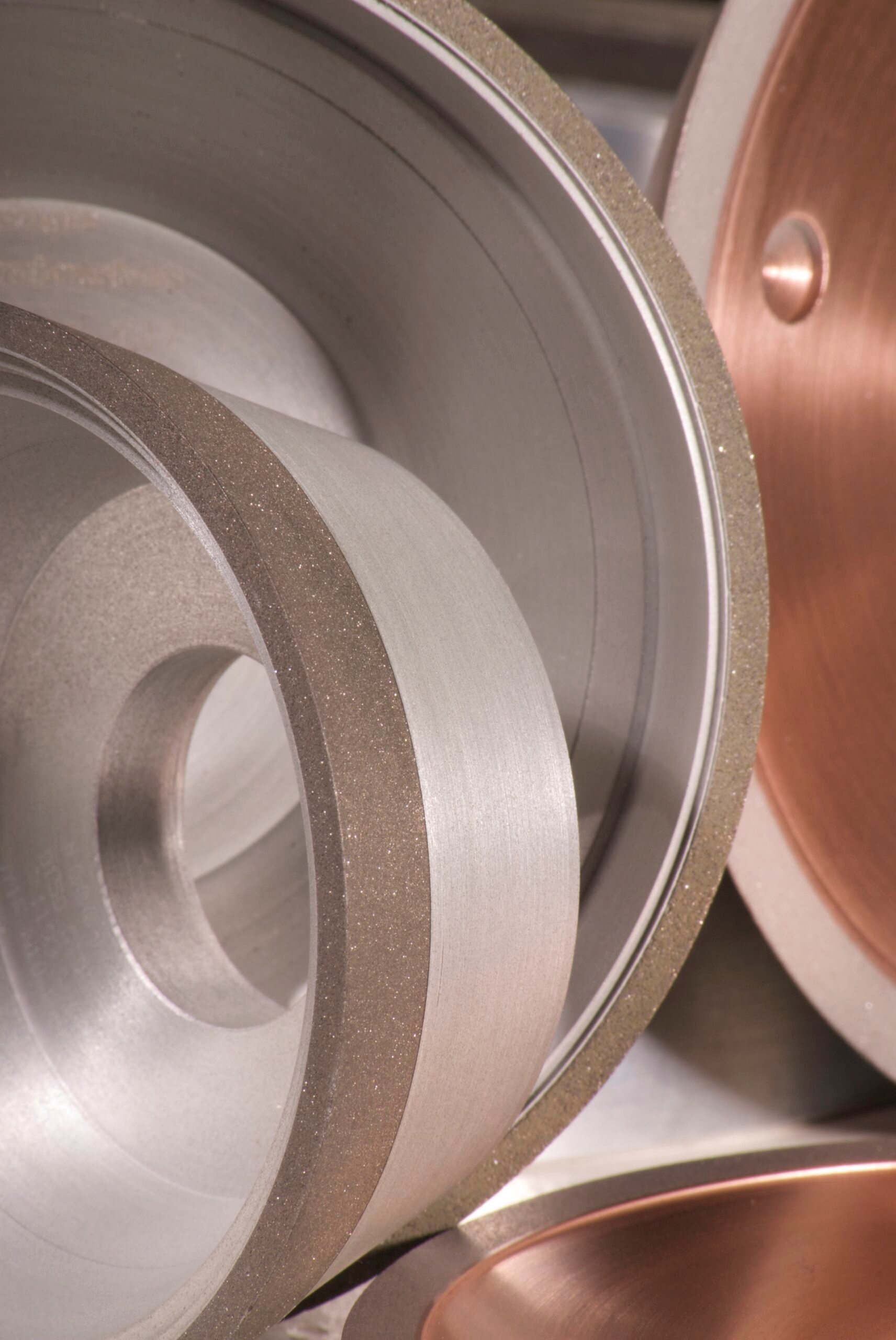4. Reduced Wheel Wear & Less Dressing
Diamond’s strength ensures your wheel holds its cutting edge longer, resisting load-up and glazing. That means:
- Less frequent dressing and truing
- More time grinding and less time maintaining wheels
- Consistent part quality over extended production runs
Fewer interruptions not only lower operating costs but also keep machines producing parts with minimal downtime.
5. Versatility Across Industries
Because diamond wheels can be engineered in different bonds, grit sizes, and profiles, they are used in an incredible range of industries and applications, including:
- Cutting tools – Carbide drills, end mills, inserts
- Medical – Dental burrs and surgical instruments
- Aerospace – Nickel alloys, turbine components, precision composites
- Electronics & Optics – Wafer dicing, glass grinding, optics finishing
- Stone & Composite materials – Cutting, shaping, and polishing
Whether for cut-off operations, precision profile grinding, or large-scale production, diamond wheels can be configured to your exact process.
Find Your Ideal Diamond Wheel for Precision Grinding
You’ve seen the benefits—now make them work for your operation. The right diamond grinding wheel depends on more than just grit or bond; shape, profile, and diamond concentration all influence performance. Whether you’re grinding hard materials like carbide or finishing delicate ceramics, Eagle’s diamond cup wheels and custom profiles ensure consistent, high-precision results.
Explore our Diamond & CBN Wheel Shape Guide to choose the ideal cup wheel or profile for your machine setup and material type.
Ready to build your own? Use our Wheel Builder Tool to design a diamond wheel engineered for your exact grinding application.
From aerospace and medical to tool and die production, diamond abrasive wheels from Eagle Superabrasives deliver the precision grinding performance that keeps your parts perfect and your production moving.
Frequently Asked Questions
What are the benefits of using diamond grinding wheels?
Diamond grinding wheels offer numerous advantages, including faster material removal, longer tool life, and a superior surface finish. These wheels are crafted with diamond grit, making them extremely hard and wear-resistant, which is ideal for grinding carbide tools and other tough materials. Additionally, they maintain high precision during operation, ensuring that both the wheel and workpiece achieve the desired shape and finish.
How do diamond grinding wheels compare to other abrasive wheels?
Diamond grinding wheels typically outperform other abrasive wheels, such as those made with silicon carbide or aluminum oxide, in terms of durability and cutting efficiency. They are particularly effective for precision cutting and shaping of materials. While traditional abrasive wheels may wear down quickly, diamond wheels last much longer, making them a more cost-effective choice in the long run.
What types of materials can be ground using diamond grinding wheels?
Diamond grinding wheels are versatile and can be used for grinding a variety of materials, including hard and wear-resistant substances like carbide, ceramic materials, and metal powders. Their unique composition allows them to effectively sharpen carbide and other cutting tools while providing a high-quality surface finish.
What should I consider when choosing the right diamond grinding wheel?
When choosing the right diamond grinding wheel, consider factors such as the material you will be grinding, the required surface finish, and the wheel's grit size. Finer grit wheels are ideal for achieving a smoother finish, while coarser grits are better for faster material removal. It's also important to select the right bond type to ensure optimal performance based on the specific grinding application.






